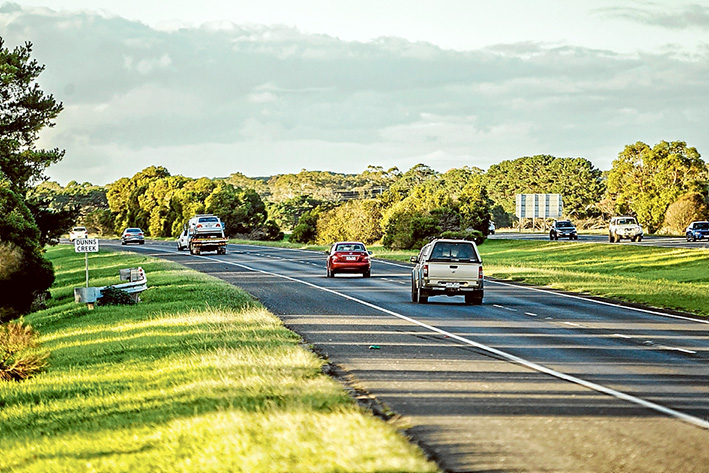WILDLIFE carers are apprehensive as they wait to hear from VicRoads about timelines for the second round of clearing vegetation from the Mornington Peninsula freeway.
The initial clearing of established vegetation on freeway between Mt Martha and Rosebud was halted following reports of animals being killed by the authority’s “forestry machine” – and even being mulched alive (“VicRoads stops shredding after outcry”, The News, 9/10/17).
Community concerns, voiced loudly on social media and radio, slammed the loss of habitat, “cruel” treatment of wildlife, lack of planning and consultation, loss of amenity to the area, increased noise and air pollution, sun and traffic glare, stronger cross winds, increased temperatures on the road and even potential flooding.
The protests led to VicRoads representatives meeting at the Rye home of Crystal Ocean Wildlife Shelter’s Brenda Marmion, alongside Eve Kelly and Craig Thomson, of Australian Wildlife Protection Council and Klarissa Garnaut, of WHOMP (Wildlife Help on the Mornington Peninsula) to find a solution.
VicRoads later called off the clearing after accepting it had had impacted on wildlife and its habitat.
Australian Wildlife Protection Council secretary Eve Kelly last week said replanting of the cleared median strip had not yet begun, possibly because VicRoads had not finished installing the contentious wire-rope safety barriers.
“This begs the question of why they went ahead with the vegetation clearing in spring if they were going to take this long to complete the barriers,” she said. “They could have left nesting birds to fledge.”
VicRoads has tendered for new contractors to clear between Rosebud and Dromana.
The AWPC has asked for the name of the new contractor, the date they intend starting and details about how many zoologists will be onsite – information they were promised in the authority’s Vegetation Clearing Action Plan.
The plan had called for the zoologists to contact wildlife shelters and vets to gauge capacities and organise care, Ms Kelly said. “To date, no wildlife shelters have been contacted, yet the shelters have been clear that we need plenty of time to plan for the wildlife that might need to come into care.
“With no confirmation date from VicRoads this planning is still up in the air.”
Ms Kelly said one of the wildlife shelters was told clearing would begin mid-May. “If this is true, VicRoads is failing to prepare and are already not adhering to the agreed and consulted plan,” she said.
“How can VicRoads be trusted to follow the rest of the plan if they are failing in the preparation stages? Again, VicRoads’ communication is very lacking.”
Crystal Ocean Wildlife Shelter’s Brenda Marmion said while travelling to Mornington on Sunday she saw two dead kangaroo joeys lying beside the road where vegetation had been completely cleared.
“Wildlife volunteers are not satisfied with VicRoads’ response to our concerns,” Ms Kelly said. “They have failed to communicate and adhere to the plan that they funded.
“There is no point in having a plan if they are not following it.
She has called for the freeway median strip clearing to “stop immediately and for VicRoads to re-think the entire project”.
Safe system road infrastructure program director Bryan Sherritt said VicRoads “recognised the importance of the environment – that’s why we’ve completed a redesign to minimise the impact on the environment and wildlife before installing these life-saving treatments”.
He did not explain how the works had been “redesigned” other than to say the Mornington Peninsula Freeway as “one our state’s most high risk roads” would receive flexible safety barriers between Mt Martha and Rosebud.
“As part of this safety upgrade, we’ve had to remove some vegetation which we’ve done in consultation with the CFA and local wildlife groups. At least two qualified zoologists will be on site during any vegetation removal to identify and assist any wildlife which may be displaced.”
“VicRoads has worked with the AWPC and informed local wildlife shelters of the works due to occur,” he said.
Vegetation removal is due to begin later this month.
First published in the Southern Peninsula News – 15 May 2018




